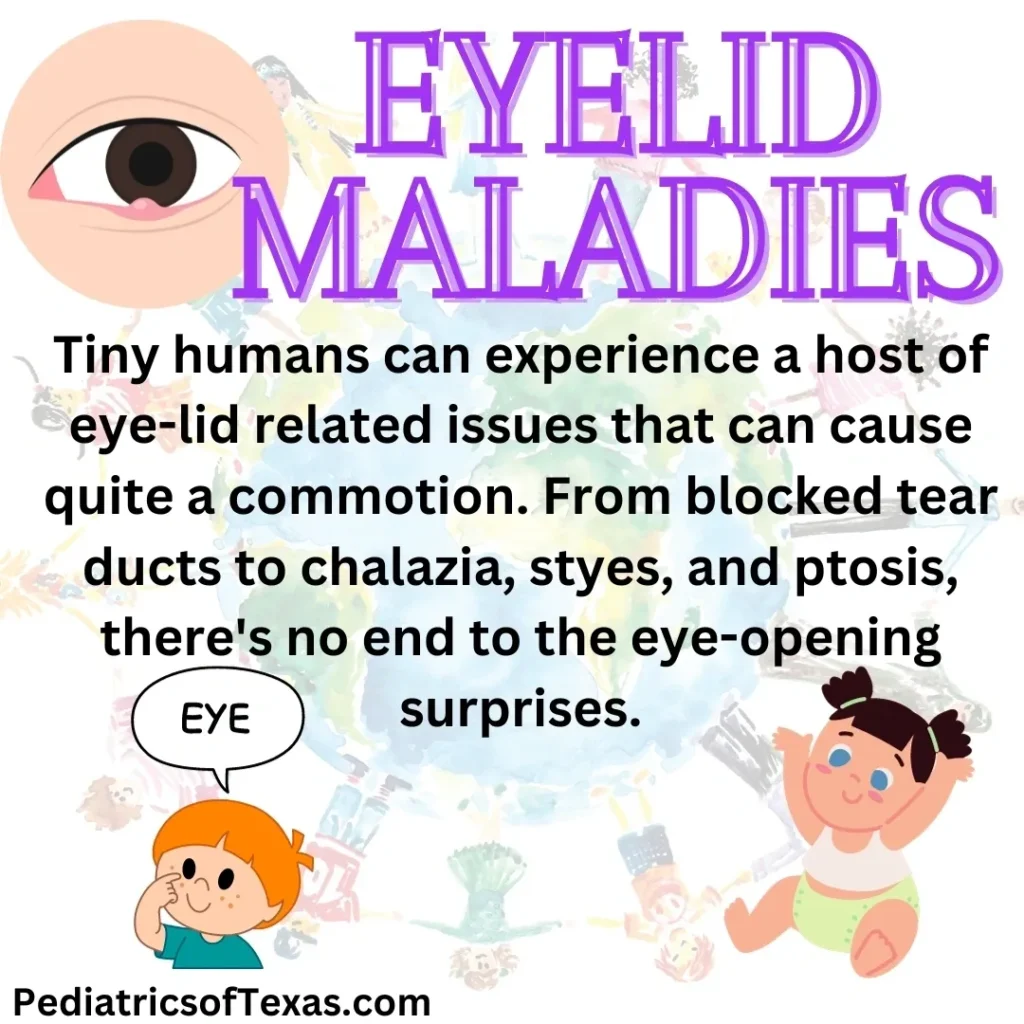
Eyelid Maladies
There are several things that occur in infants and children that affect the appearance of the eyelid. These include blocked tear(lacrimal) ducts, chalazia, styes and ptosis.
Blocked tear ducts are a common issue in newborns and result when the membrane covering the ducts fails to disappear or resolve naturally. They can be unilateral or bilateral. Our eyes are constantly producing tears and mucous to lubricate for eye movement and the drainage system for these tears and mucous is via the lacrimal duct (aka tear duct) into the nasopharynx. Obviously, if it is blocked the tears will build up causing the eye to look weepy and perhaps have tears that run down the cheek at times. It is NOT an infectious issue and does not require medication to treat. Typically, all that is needed is a gentle massage over the lacrimal area several times a day. Your pediatrician can show you the effective way to do this. If it is persistent after age 6 months, a referral to an ophthalmologist is in order to determine if other intervention, such as probing the tear duct, is necessary.
A chalazion is due to blockage of a Meibomian (oil secreting) gland along the underside of either the upper or lower eyelid. It is an inflammatory lesion and typically does not require antibiotic intervention. Applying warm compresses 3-4 times per day for about 20 minutes (or as long as your child will tolerate) is usually all that is needed for treatment. Unfortunately, they can last for weeks (unusual) but the typical course in kids is measured in days.
A stye (also known as a hordeolum) is a bacterial infection along the outside edge of the lid where the hair follicles are. Again, warm soaks or compresses are needed but in this case an antibiotic drop or ointment may need to be prescribed to fully treat it. Your pediatrician will be able to determine if your child has a chalazion or a stye and make treatment recommendations accordingly.
Ptosis is the drooping or sagging of the upper eyelid. It is usually unilateral but it can be bilateral. A child can be born with it or it can develop later. It can be partial or it may completely cover the eye. It can be benign or it can lead to corneal changes that affect the vision (astigmatism). This is something that clearly needs to be evaluated and usually requires an ophthalmologist.
